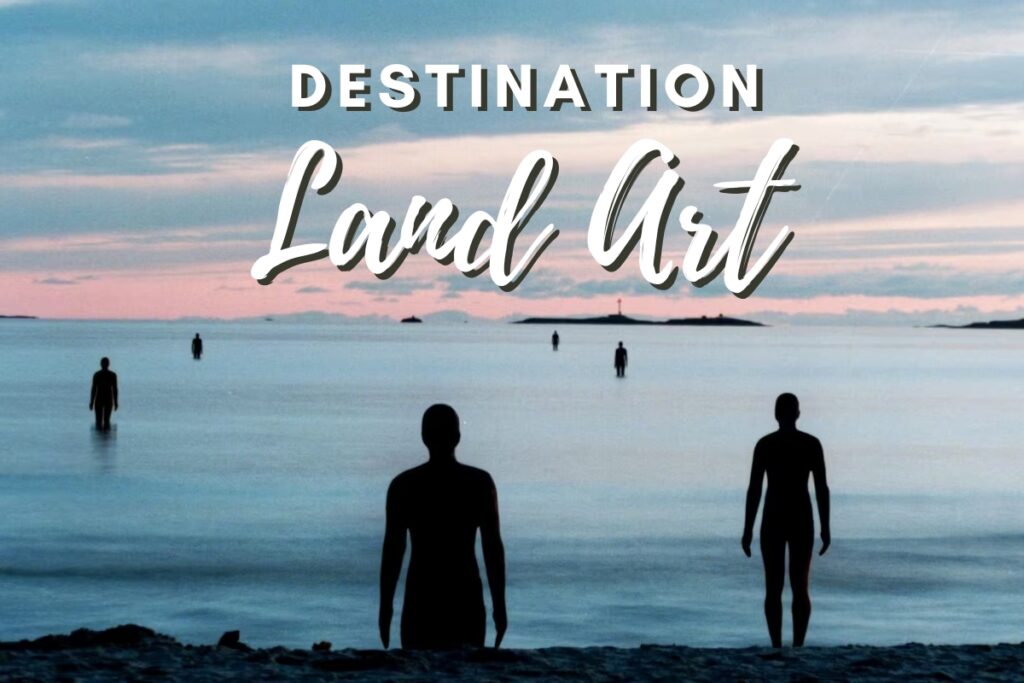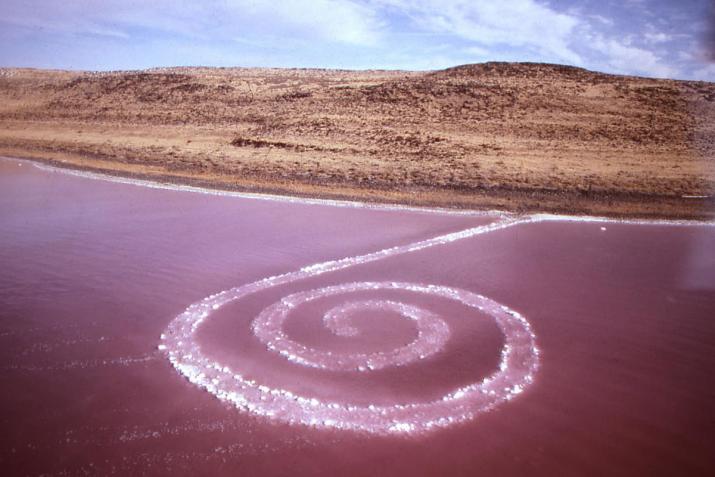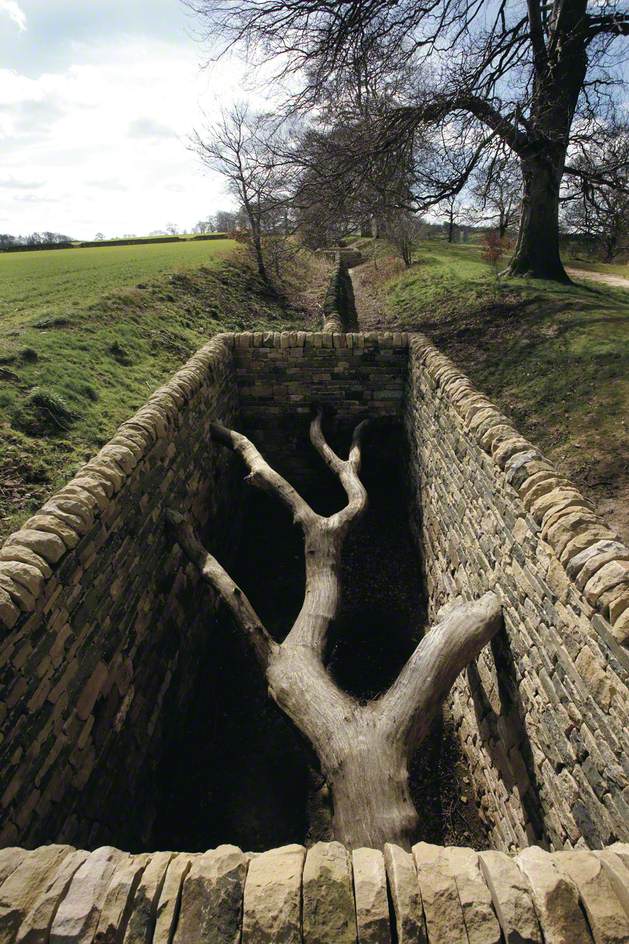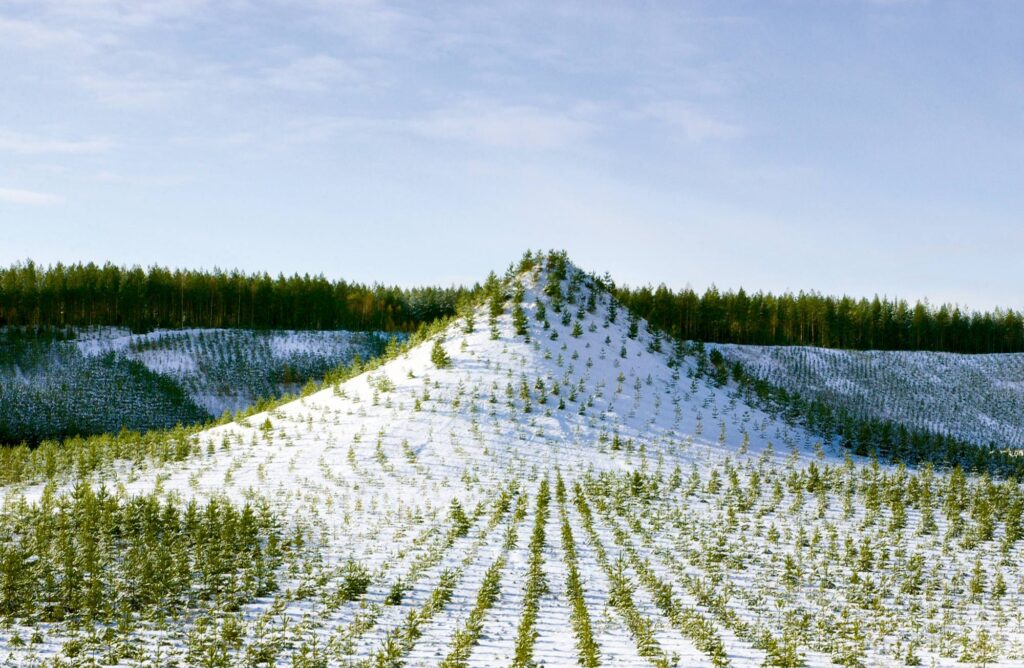
Destination Land Art
Three things converged. Which could be the title of a land art or destination art piece. It isn’t. Humans love finding connections and coincidences when and where we want to see them. We ascribe great significance to them. I have written before about how art takes us on journeys, whether through literature or paintings. Join me on another one.
In August I was in Dublin and visited the National Gallery of Ireland. In the bookstore I saw a new and compact book titled Destination Art by Amy Dempsey. I already own about a dozen such books, but of course I bought it. Later the same day at a different bookstore I saw a novel by Sara Baume titled A Line Made by Walking. I had read her previous book, Spill Simmer Falter Wither. It is brilliant and if you have not read it yet, do so. What really caught my eye was that the title of this second novel is also the title of a famous work of land art by Richard Long. How could I resist? I bought that book too. Just this week the Guardian newspaper published a feature on Richard Long who has a current exhibition in London. Of course the article mentioned A Line Made by Walking.

Why I Care about Land Art
The coincidences continued. I successfully pitched the Baume novel to my book club once back in Winnipeg. One member had just been reading about City by Michael Heizer. A massive, perhaps the world’s largest, artwork in the Nevada desert, City is opening to visitors 50 years after construction began on it. This piece is definitely an earthworks variation of land art. As the Guardian article points out, American land art inclines to the monumental. Although not always. When I made a pilgrimage in Utah to see Spiral Jetty by Robert Smithson, it was much smaller than I had imagined.
Spiral Jetty could be what sparked my fascination with land art. I first heard of it many years ago when I visited an exhibit at London’s Tate Modern, my first exposure to the art form. I couldn’t believe that two things which I am passionate about – art and the environment – could be so intertwined. It was a revelation. I came home with my first book on the subject.
The beauty of some land art moves me. Andy Goldsworthy’s ephemeral pieces are arresting in their splendor. How can he possibly make them? A special exhibition of Giuseppe Penone at the National Gallery of Canada in the 1980’s showcased his startling inventiveness. It is beautiful art that makes us think and see differently. Some land art makes me smile because it is so quirky and playful – Patrick Dougherty weaves natural architecture. Land art can be political, like works by Cristo and Joseph Beuys. The art can be subtle or overwhelming. It might invite you in to directly connect by walking or touching. Others repeal you, even as you might admire the creativity. The scope and diversity of land art is intriguing for me. It invites exploration of ideas and places. Which of course leads to travel.

Art and Travel
Destination art in its name implies travel. If you want to see land art, you have to go to where it is.
My new book on Destination Art prompted me to take a journey down memory lane about some of voyages which I have taken to see land or destination art, in addition to Spiral Jetty:
- In Finland I travelled to Pinsaö to see Tree Mountain by Agnes Denes and Up and Under by Nancy Holt.
- While in Varese, Italy, a visit to the Villa Panza introduced me to James Turrell. He has created monumental earthworks but here I was enthralled with his Sky Space series.
- A detour in England took me to the Yorkshire Sculpture Park filled with hours of delightful discovery. Highlights included stone works by Goldsworthy and David Nash’s Seventy-one Steps.
- A park in Paris has a Penone sculpture, subtle but magnificent.
- In Palo Alto, California, Dougherty built amazing “buildings” in a city park, now long disintegrated.
- Broken Column by Antony Gormley in Stavanger, Norway was a wonderful surprise, although I am not quite sure if it really is land art. Definitely qualifies as destination art.
In browsing my various books, I am struck by how many art parks exist. Many have more than sculptures placed in the landscape but include true works of land art. These are subject to change with seasons, exposure to elements, the force of vegetation and sometimes human interaction. That is also part of the fascination. It makes me even more eager to travel to see things now and also how they evolve with time.
Clearly I am not alone in my desire to combine travel with visits to art in the landscape. Erin Hogan wrote Spiral Jetta, a fun play on words about her road trip through the land art of western United States. Artnet published itineraries and details on four land art road trips in America. TripAdvisor recommends a day trip to the largest land-art museum in the world – unfortunately in Russia so not currently accessible. Flevoland in the Netherlands claims that “Nowhere in the world is there so much land art in one place” with organized and tailor-made tours running regularly in 2022. You can visit Robert Morris’ Observatory, an iconic work of land art as well as a recent work by Antony Gormley.

A Final Coincidence
In Sara Baume’s A Line Made by Walking, the narrator constantly refers to different works of contemporary art, including some land art such as the book’s namesake. Here is the final coincidence to share. I was reading the novel on the train between Koblenz, Germany and Helsingborg, Sweden – which is another story involving the carbon footprint of Rowing The World. The train made a stop in Kolding, Denmark, which I had not heard of before. Shortly after, as I continued reading, an artwork in that town was mentioned in the novel.
“The road ahead is lined with strange structures. Some of them are definitely public sculptures, but with others, I’m not so sure. A billboard displaying torn and stapled paper fragments: art? Concrete steps up a grassy verge leading to nowhere: art?
I think: art is everywhere. I think: art is every inexplicable thing”
From A Line Made by Walking by Sara Baume.